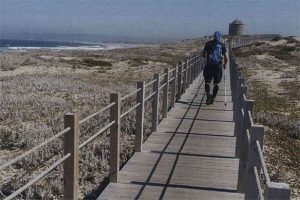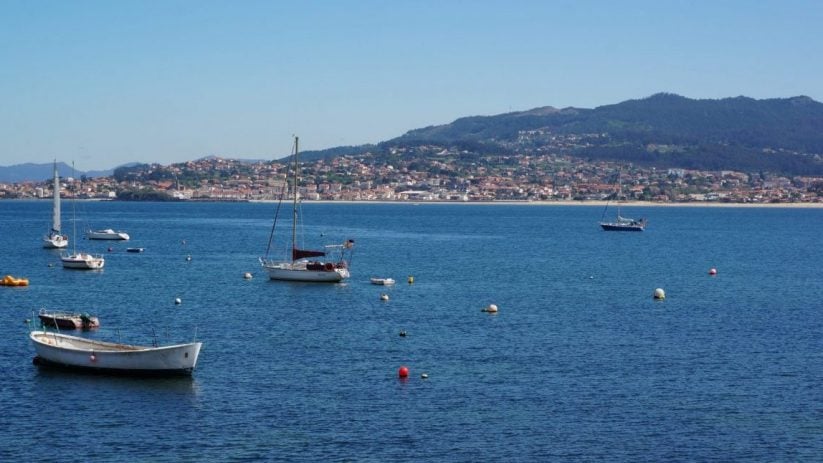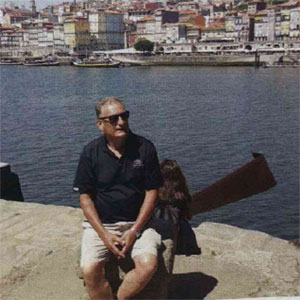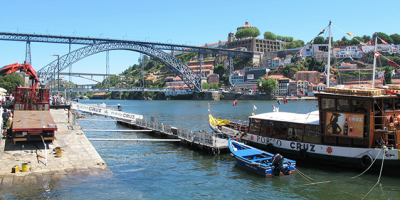 Journalist Gerry Lennon from The Irish Daily Star discovers the wonders of Northern Portugal and Galicia’s Rias Baixas on a crowd-free Camino.
Journalist Gerry Lennon from The Irish Daily Star discovers the wonders of Northern Portugal and Galicia’s Rias Baixas on a crowd-free Camino.
The Portuguese Coastal Way – or Caminho da Costa – is a stunning alternative route of the Portuguese Camino de Santiago following the Atlantic Coast towards Santiago de Compostela.
The Portuguese Coastal Way starts in the colourful UNESCO-listed city of Porto, which has the river Douro as its heartbeat. I strongly recommend taking time either at the beginning or the end of the walk to explore this wonderful city.
This section of the Camino will take you to charming seaside towns and fishing villages in Northern Portugal before crossing by ferry or private boat – which is more fun – across the River Minho estuary into A Guarda, in Galicia, and the heart of the Rias Baixas.
Discover the wild Atlantic beauty and sandy beaches of Northern Portugal and Galicia, taste delicious seafood and wine, stay in fishing villages and feel refreshed by the maritime feel of the Coastal Camino.
You will walk along this rugged coast with the Atlantic breakers crashing to your left the whole way. It’s a truly stunning and unspoiled coastline.
The full Portuguese Coastal Way takes just under two weeks to complete or you can choose to do a section of it in one week. We decided on one week, walking from Porto to Baiona (approx 130kms), and we made sure to have some time at the end to spend in Porto.
I can now see why thousands of people travel from all around the globe every year to walk what has become one of the world’s most renowned pilgrimages, but where did it all begin?
There is a fascinating history of the Camino de Santiago and it’s shrouded in mystery, legend and colourful myths.
According to the official history of the pilgrimage, the body of Saint James the Apostle was discovered by a shepherd named Pelayo in a field in Galicia during the reign of King Alfonso II, back in the ninth century.
The Apostle gives the route its name: Camino de Santiago means the Way of Saint James.
Saint James had died some 800 years earlier and according to legend transported to Galicia – to the town of Padron, on the Camino Portugues – by two disciples in a boat led by angels.
Somehow his body was then buried in a field not far from there – where it would be discovered a few centuries later.
Our fist day’s walking takes us along the beautiful sandy beaches on the outskirts of Porto passing fishing villages, forts and chapels and it’s a 27km walk to Povoa de Varzim.
Over the course of the week you will pass through some of the most beautiful coastal towns imaginable.
Most of the journey is along boardwalk with stunning views of the wild Atlantic.
The next day it’s about 22km between Esposende and then 24km on to Viana do Castelo. Legend has it that when the Romans reached Viana they thought they had reached paradise!
The journey on the fourth day includes taking a ferry boat across the river Minho to Galicia in Spain and then on to A Guarda, which is home to Galicia’s ancient Celtic settlement Castro de Santa Tegra. This elevated ruin offers stunning views back in to Portugal across the Minho estuary.
The views from the top, of the Minho estuary, the Atlantic and all the town of A Guarda are stunning. The settlement itself is very well preserved and this is a sight not to be missed, specially on a clear day.
The final leg of the journey takes you to the beautiful Baiona. This seaside town has a lot of charm with a quaint fishing port, several small but appealing beaches, plus an old town that sits just behind the main seafront area.
There are also many small beaches along the coastline within close proximity to Baiona and this is one of the reasons why it is so popular with Spanish people for summer holidays.
We then hopped on a bus for the two-hour journey back to Porto for some R&R.
I would strongly recommend a Camino week or two in place of a traditional package holiday. You need a reasonable level of fitness – but you don’t have to be a marathon runner.
Good boots, some Compeed blister pads, and light flexible clothing and you are on your way.
We intend to complete the journey from Vigo to Santiago next time. Buen Camino!
 WHY CHOOSE THE PORTUGUESE CAMINO?
WHY CHOOSE THE PORTUGUESE CAMINO?
The Portuguese Coastal Camino is still relatively quiet compared to more traditional routes and that is a big attraction as none of the trails are overcrowded.
We had some of the most beautiful seafood dishes imaginable in local restaurants along route and all reasonably priced.
Beer and wine averages just €1.50 a glass and you can expect to pay the same for a first class coffee.
The food is simple and wholesome with local specialities such as ‘bacalao’ (cod) that are stunning.
You know that everything is fresh – in fact, you can see the fish being landed right in front of you!
The people are courteous and friendly and you can tell they are happy to live in this region and lead a simple life.
FACT BOX
We planned and booked our Camino with CaminoWays.com in Dublin. They arranged all our accommodation along the way, mapped out our itinerary and had our main bag moved from each destination.
It all worked like clockwork, the accommodation was excellent, and they are always happy to offer advice especially for first time travellers.
They will provide you with route maps and expected times and distance between each point.
NOTE: This article was first published in The Irish Daily Star Chic Magazine on Saturday 29th October 2016.
For more information about the Portuguese Coastal Way, other Camino routes or to book your trip contact our travel specialists

 WHY CHOOSE THE PORTUGUESE CAMINO?
WHY CHOOSE THE PORTUGUESE CAMINO?